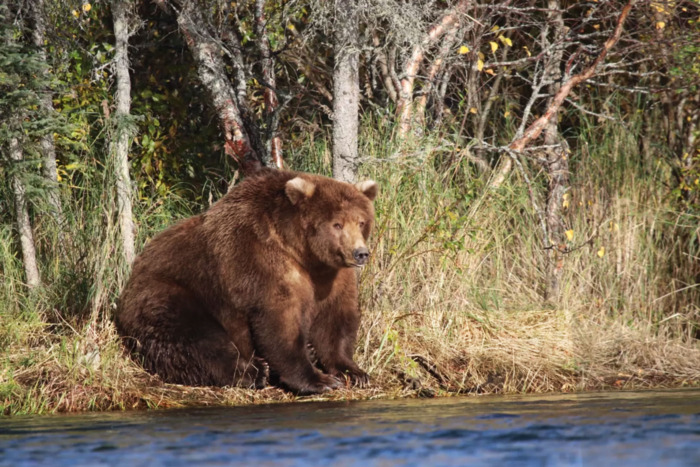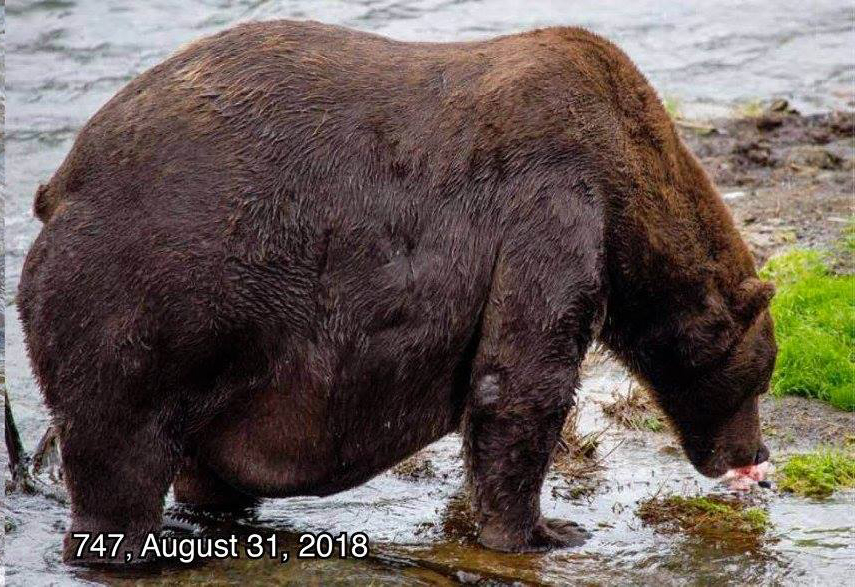But there’s no fat shaming here.
In brown bears, large amounts of body fat are indicative of good health and strong chances of survival, the park staff notes. The bears need stores of fat to help them survive hibernation, which can last for up to half of the year. Over the course of winter hibernation in the den, a bear could lose up to one third of its body mass. In preparation, this time of year the bears are entering hyperphagia, a state in which they eat nearly non-stop. Since July, the bears have seen dramatic and transformative weight gain that was on full display during Fat Bear Week. Bears in the park can be seen on the live bear cam when they are not hibernating at the following link.
Live Cam
The Winner2018 Winner
409 Beadnose is the winner of the 2018 Fattest Bear competition for the National Park Service. She received about 6,300 Facebook likes to 747’s 2,800. She was first identified in the park back in 1999. According to the Bears of Brooks River 2018 e-book — the best book of the year and possibly the century — 409 is a mother who’s had at least four litters of cubs. “When she is not raising cubs, this bear is usually one of the fattest females in the fall,” the book explains. “Raising offspring is very energetically taxing for bears. Females with offspring must sacrifice body fat to raise cubs.” (Women still can’t have it all!) She easily displaced last year’s winner, 480 Otis, in the second round of the competition. “She’s an independent woman after emancipating her cubs early in the season and she was able to keep all that salmon for herself,” Katmai park ranger Andrew Lavalle told the Cut. “And she’s looking quite pudgy because of it.” (Text adapted from "Behold America's Fattest Bear", Gabriella Paiella, The Cut)

2nd place
The runner-up is the hefty bear 747. "Was it a jumbo jet or an Alaskan Brown Bear?", was discussed over social media during the competition. Over the course of just three hours in late June, ecologist Mike Fitz stood atop a bear viewing platform in Alaska's Katmai National Park and watched Bear 747, a dominant male, consume 15 whole salmon. "That's about 67,000 calories," according to the former ranger. Many voted for 747 as Fat Bear Week's fattest bear and believed the titanic animal — whose belly is nearly dragging on the ground — was likely to prove victorious in the Fat Bear Week bracket over such formidable contenders as Bear 480, a three-time champion. According to Fitz, who spent the summer in Katmai documenting bear activity, 747 arrived at the salmon-rich Brooks River on June 25, "and he never left for very long." (Text based on Mashable article by Mark Kaufman, 10/02/2018)